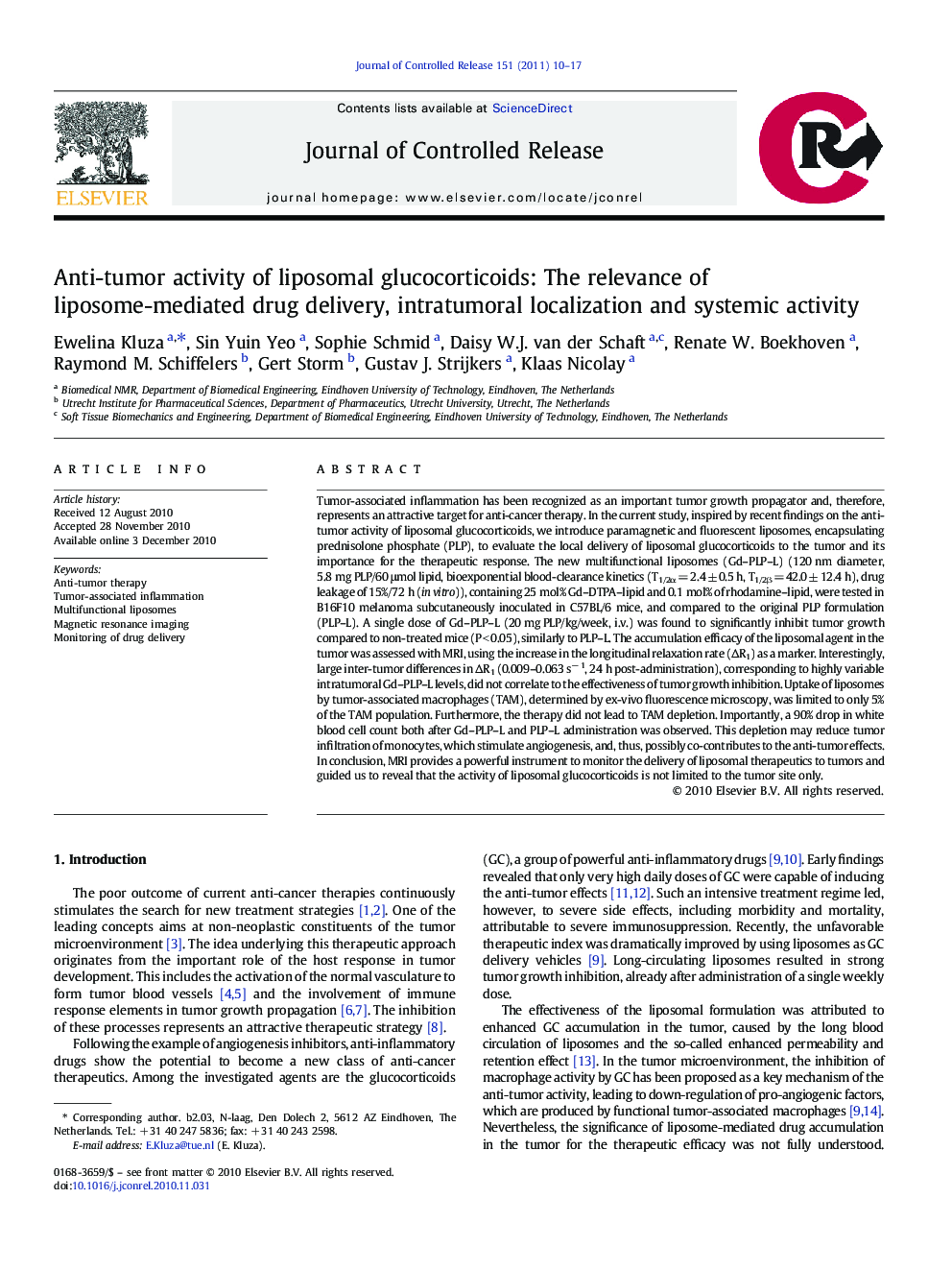| Article ID | Journal | Published Year | Pages | File Type |
|---|---|---|---|---|
| 1425253 | Journal of Controlled Release | 2011 | 8 Pages |
Tumor-associated inflammation has been recognized as an important tumor growth propagator and, therefore, represents an attractive target for anti-cancer therapy. In the current study, inspired by recent findings on the anti-tumor activity of liposomal glucocorticoids, we introduce paramagnetic and fluorescent liposomes, encapsulating prednisolone phosphate (PLP), to evaluate the local delivery of liposomal glucocorticoids to the tumor and its importance for the therapeutic response. The new multifunctional liposomes (Gd–PLP–L) (120 nm diameter, 5.8 mg PLP/60 μmol lipid, bioexponential blood-clearance kinetics (T1/2α = 2.4 ± 0.5 h, T1/2β = 42.0 ± 12.4 h), drug leakage of 15%/72 h (in vitro)), containing 25 mol% Gd–DTPA–lipid and 0.1 mol% of rhodamine–lipid, were tested in B16F10 melanoma subcutaneously inoculated in C57BL/6 mice, and compared to the original PLP formulation (PLP–L). A single dose of Gd–PLP–L (20 mg PLP/kg/week, i.v.) was found to significantly inhibit tumor growth compared to non-treated mice (P < 0.05), similarly to PLP–L. The accumulation efficacy of the liposomal agent in the tumor was assessed with MRI, using the increase in the longitudinal relaxation rate (ΔR1) as a marker. Interestingly, large inter-tumor differences in ΔR1 (0.009–0.063 s− 1, 24 h post-administration), corresponding to highly variable intratumoral Gd–PLP–L levels, did not correlate to the effectiveness of tumor growth inhibition. Uptake of liposomes by tumor-associated macrophages (TAM), determined by ex-vivo fluorescence microscopy, was limited to only 5% of the TAM population. Furthermore, the therapy did not lead to TAM depletion. Importantly, a 90% drop in white blood cell count both after Gd–PLP–L and PLP–L administration was observed. This depletion may reduce tumor infiltration of monocytes, which stimulate angiogenesis, and, thus, possibly co-contributes to the anti-tumor effects. In conclusion, MRI provides a powerful instrument to monitor the delivery of liposomal therapeutics to tumors and guided us to reveal that the activity of liposomal glucocorticoids is not limited to the tumor site only.
Graphical AbstractFigure optionsDownload full-size imageDownload as PowerPoint slide
